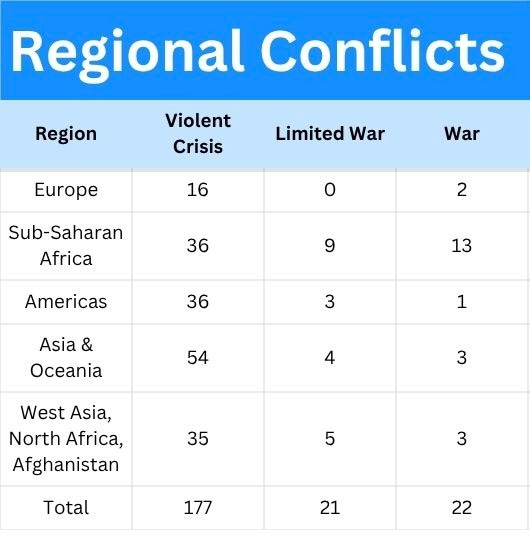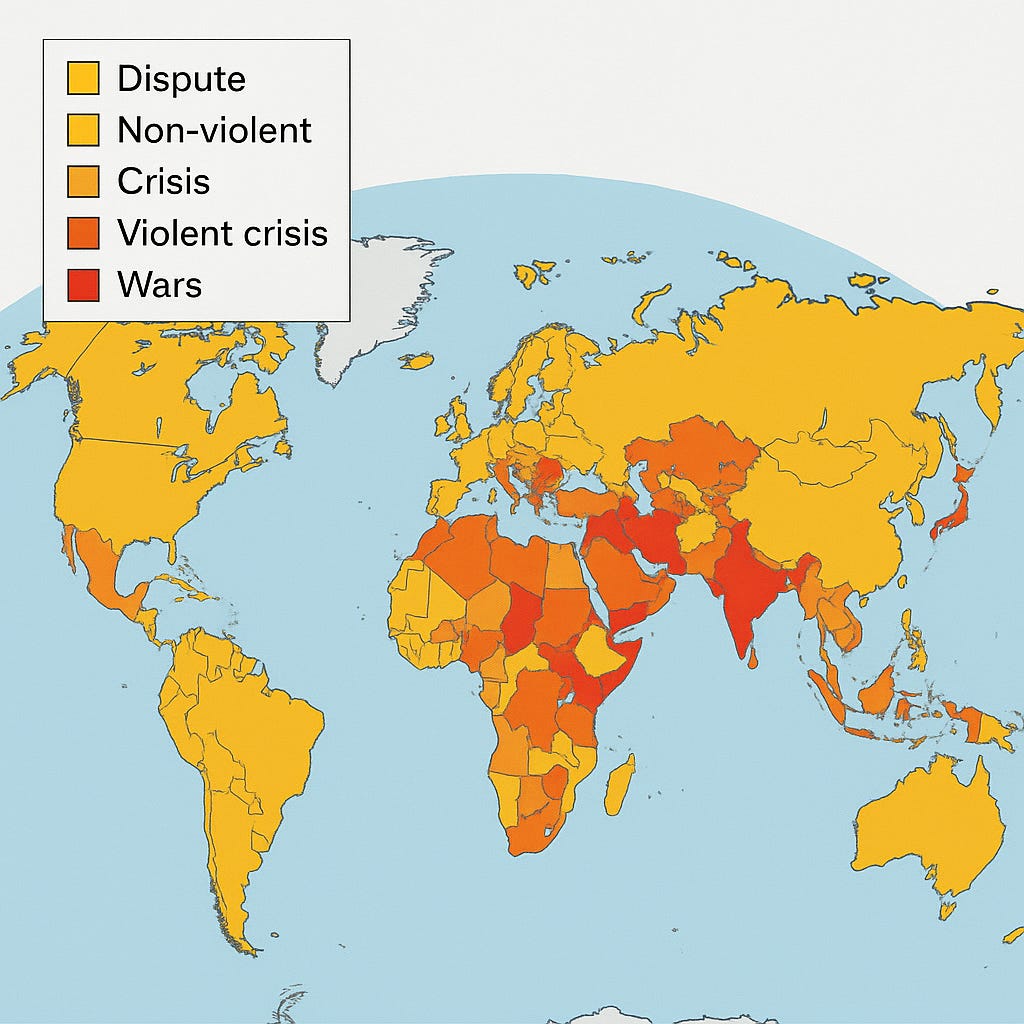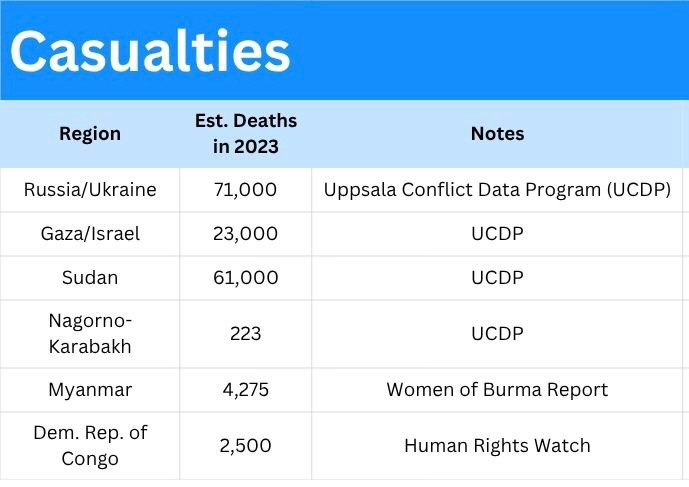Endless Conflict
What's happening in the world right now?
Not long ago, I told a group in a meeting that there were over 140 violent conflicts happening around the world. I had read that number somewhere and felt confident I was close. From the looks on their faces, I could tell some didn’t believe me.

So I looked it up.
It’s worse than I thought.
According to the Heidelberg Institute for International Conflict Research (HIIK), there were 220 violent conflicts and 22 wars in progress as of the end of 2023. Their most recent report, released near the end of 2024, shows just how widespread organized violence has become.
The information lags—a year or more behind—but even delayed data gives us a sobering sense of the world’s turmoil.
Counting Conflict Is Harder Than It Seems
Some things are just hard to count.
Think about the population of the United States: we take a census every ten years, but still debate who should be included, how to handle undercounts, and what estimates to trust. We say there are about 340 million of us—but that’s an approximation.
Counting violent conflicts is just as complicated.
Different organizations use different definitions, thresholds, and criteria. What qualifies as a violent conflict? A street fight doesn’t qualify—but what about armed groups fighting over territory or resources? The answers depend on who’s counting, and what they mean by “conflict.”
How Researchers Define Violence
The International Committee of the Red Cross (ICRC) defines “armed conflict” in terms of international law under the Geneva Conventions.
• International Armed Conflicts (IACs): Armed force between two or more states.
• Non-International Armed Conflicts (NIACs): Armed confrontations within a single state, between government forces and organized armed groups.
To qualify as a NIAC, the violence must be protracted and organized, not just isolated incidents. Analysts look at the intensity (frequency and lethality of fighting) and the organization of the armed groups involved.
Using these criteria, the ICRC counted 120 armed conflicts in 2023.
The HIIK, by contrast, takes a social-science approach. It evaluates five indicators—weapons, personnel, casualties, refugees, and destruction—each rated from 1 (low) to 5 (high). When several reach high intensity, the conflict is classified as violent.
Where the Fighting is Worst
Sub-Saharan Africa and Asia remain the most deeply affected regions, while Europe’s smaller total includes two high-intensity wars—Ukraine and the South Caucasus.
The Human Toll
Numbers alone can’t convey the suffering, but they remind us of its global scale.
In 2023, armed conflicts caused over 233,000 deaths, with many more people injured or displaced. The true toll is often higher—data collection in war zones is always delayed and incomplete.
Each figure represents families torn apart, lives cut short, and communities displaced—stories that rarely make the news.
Why So Much Violence?
Violence has shadowed humanity since our earliest history. While some wars arise from individual decisions, broader structural factors drive most conflict:
• Ideology – Competing worldviews or political absolutism.
• Resources – Struggles over land, minerals, water, or food.
• Power – Rivalries within and between nations.
• Territory – Disputes over borders or independence.
These pressures grow worse when institutions fail. The United Nations has been weakened by political gridlock and waning U.S. support. As accountability erodes, violations of international law—including attacks on civilians—become more frequent. Meanwhile, climate stress and environmental decline amplify competition for scarce resources
Moving Forward
If peace feels out of reach, that’s all the more reason to pursue it.
At the global level, leaders must resist the lure of isolationism and “might-makes-right” policies. Withdrawing from the world stage leaves space for aggression to grow unchecked. Cutting humanitarian aid leaves fragile nations more desperate and unstable.
But peace also begins closer to home—in how we speak, listen, and treat one another. Open communication, non-violent problem-solving, and empathy within our own communities can model the behaviors the world needs most.
Every act of peace counts.
“Peace does not mean an absence of conflicts; differences will always be there.
Peace means solving these differences through peaceful means.”
— Dalai Lama XIV
Perhaps the task before us is to become better at counting peace—not just conflict.





